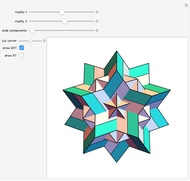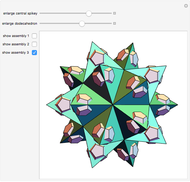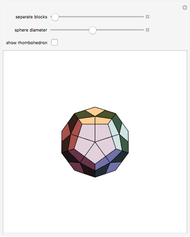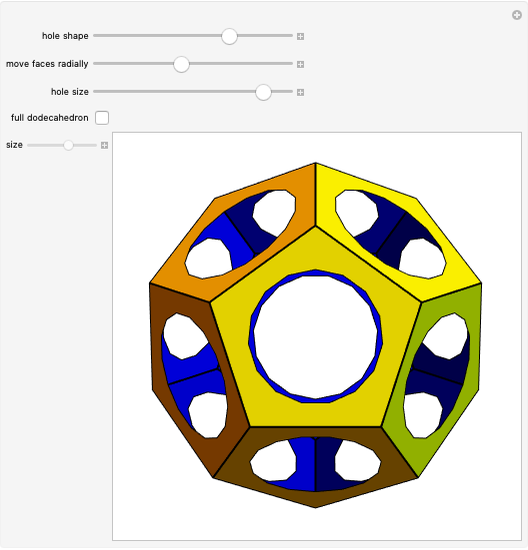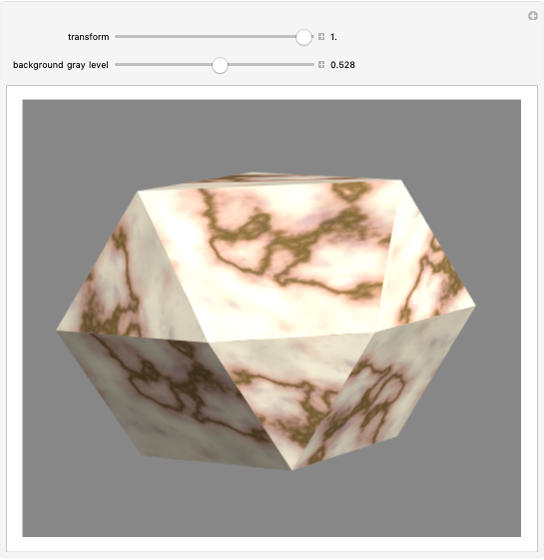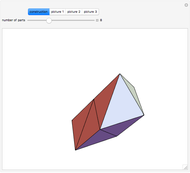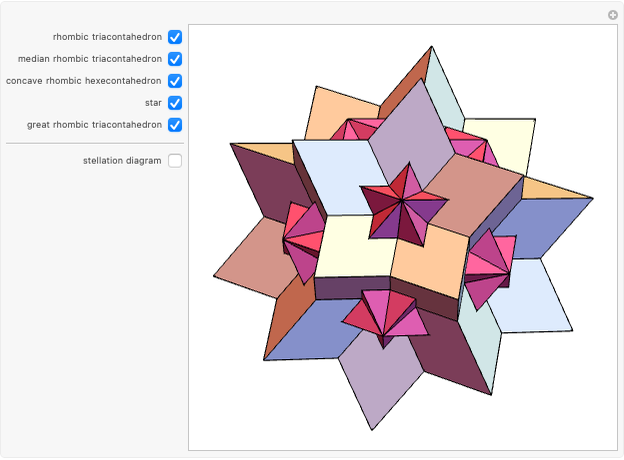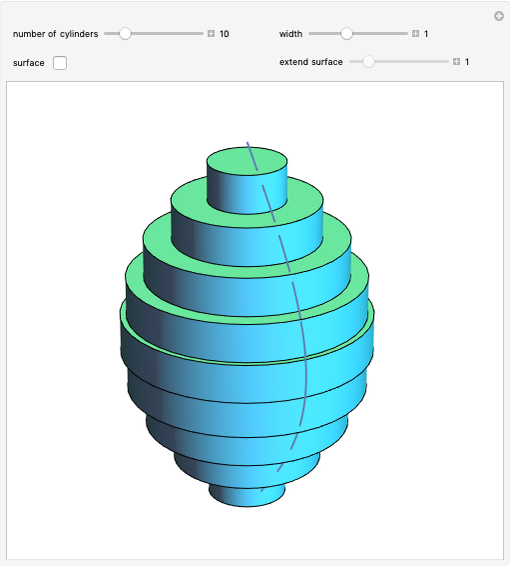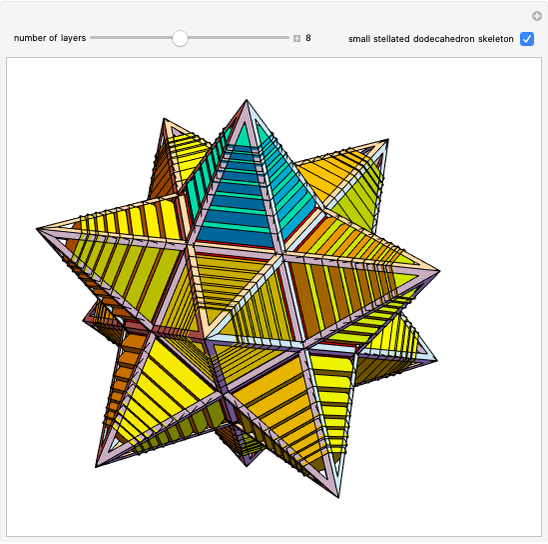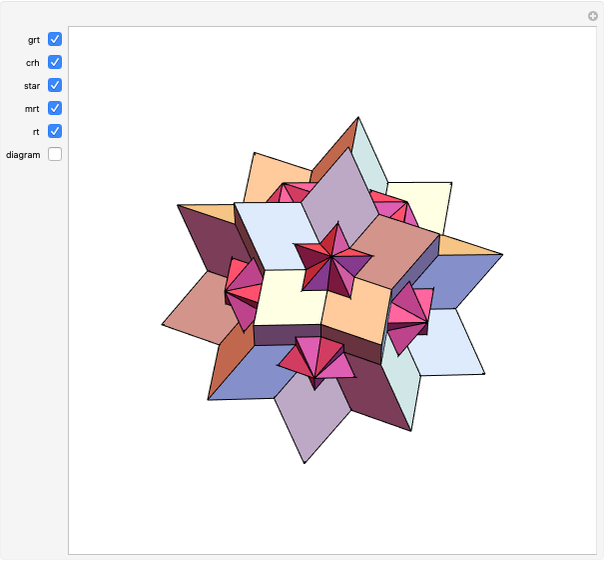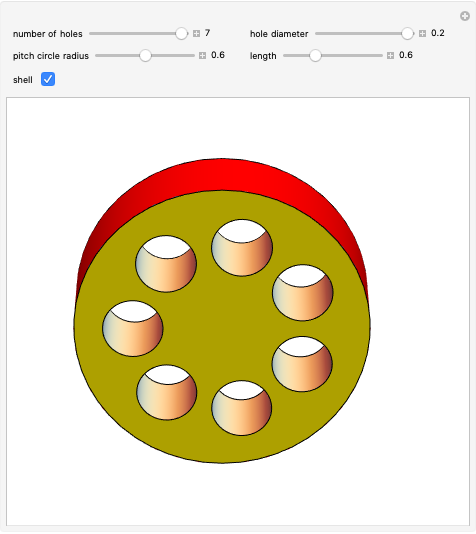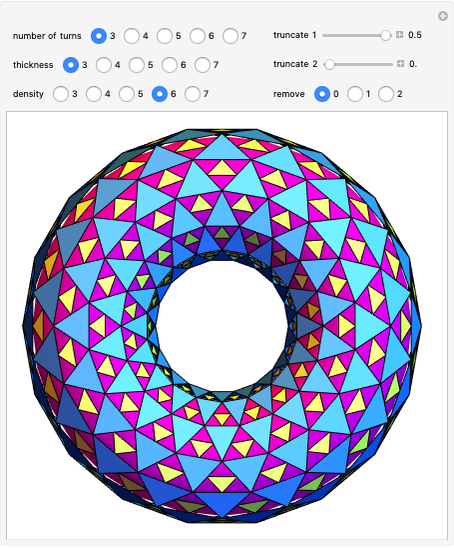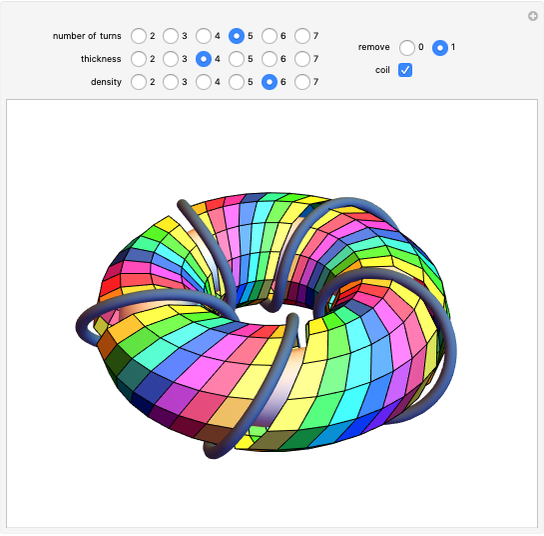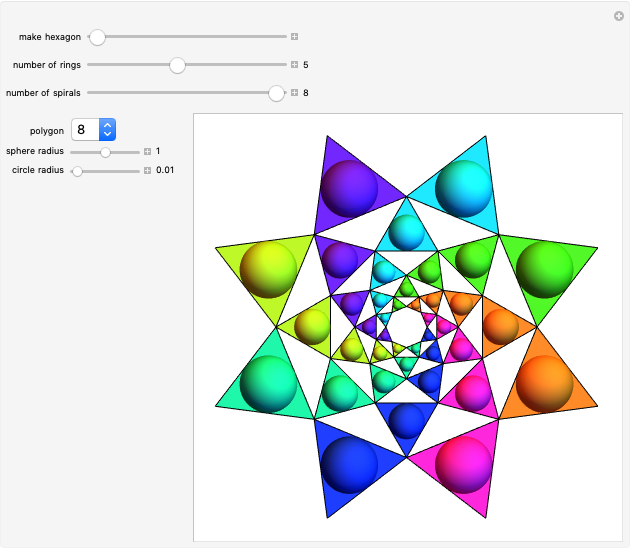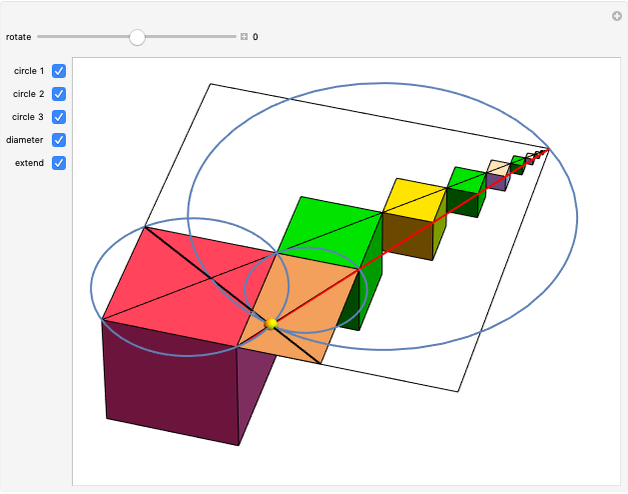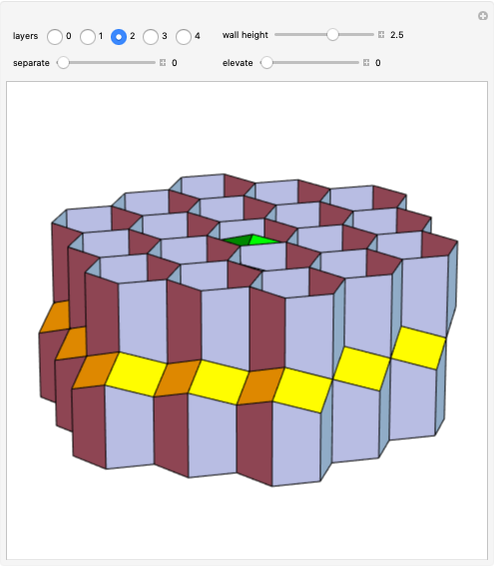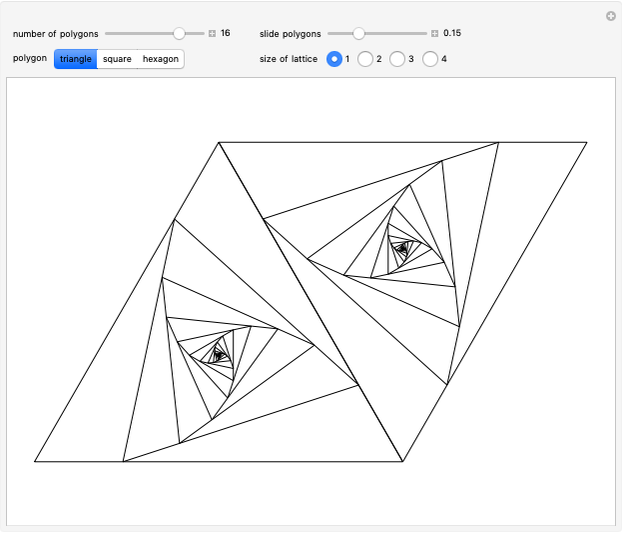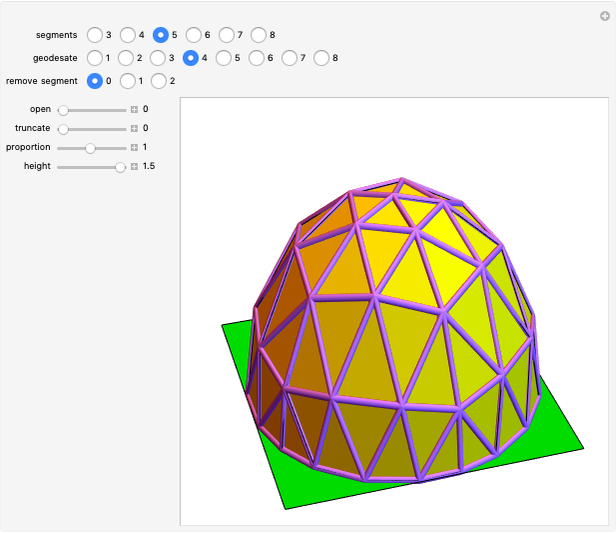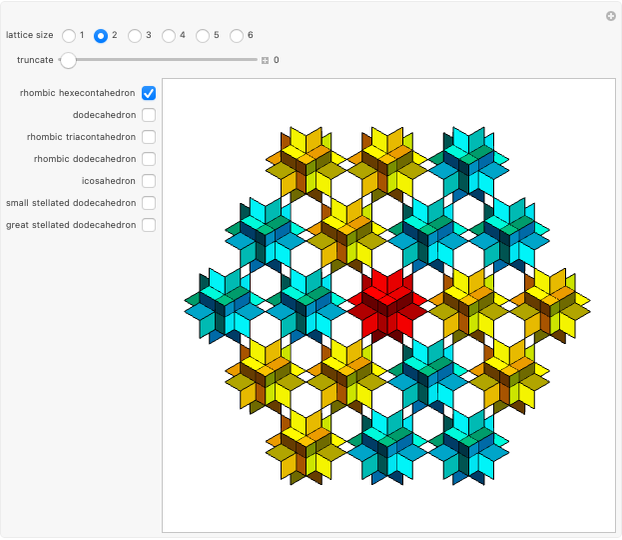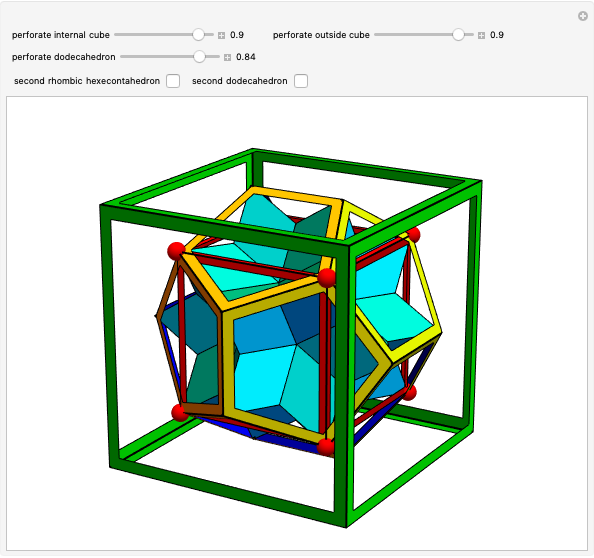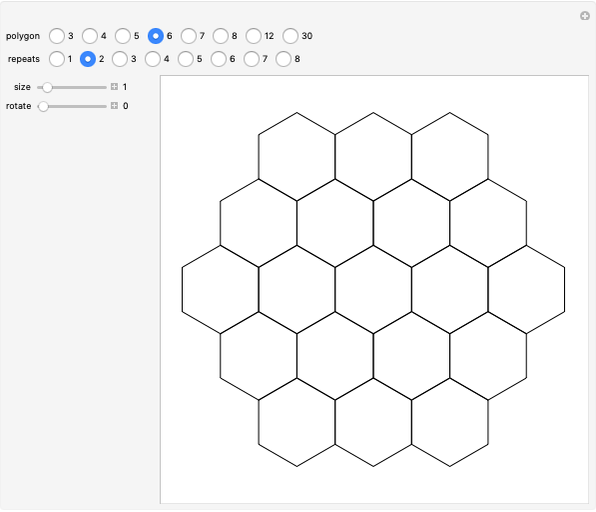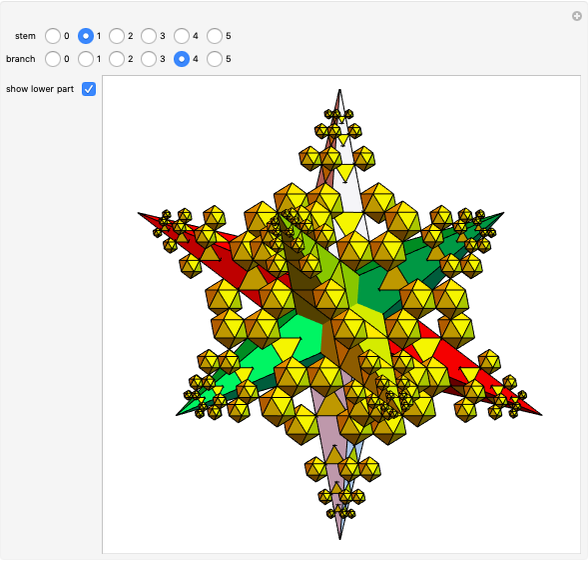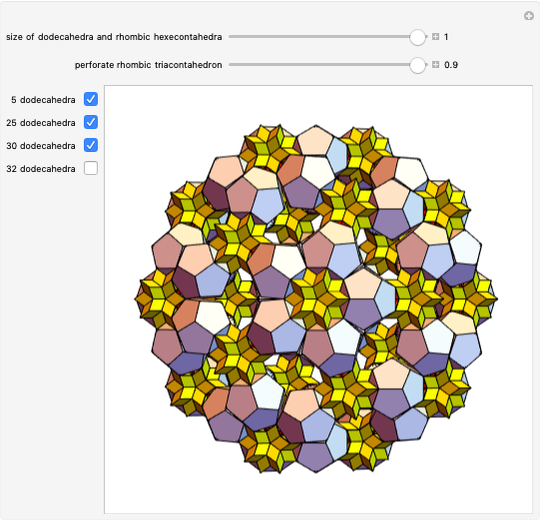Icosahedron-Dodecahedron Sculpture

Requires a Wolfram Notebook System
Interact on desktop, mobile and cloud with the free Wolfram Player or other Wolfram Language products.
The duals icosahedron and dodecahedron are divided into pyramids (20 and 12, respectively), the bases of which are formed by the faces of the icosahedron and dodecahedron, with the pyramid vertices at the center. Move the pyramids in a radial direction until the vertices coincide with those of a central icosahedron and a central dodecahedron. At this position, the bases of the pyramids meet at their vertices and form the faces of a small rhombicosidodecahedron. In this way, a stable structure is created because the central icosahedron is held by the vertices of pyramids of the icosahedron and the central dodecahedron is held by the vertices of the pyramids of the dodecahedron, while the bases of the pyramids form a rigid frame.
Contributed by: Sándor Kabai (January 2020)
Open content licensed under CC BY-NC-SA
Snapshots
Details
Permanent Citation






